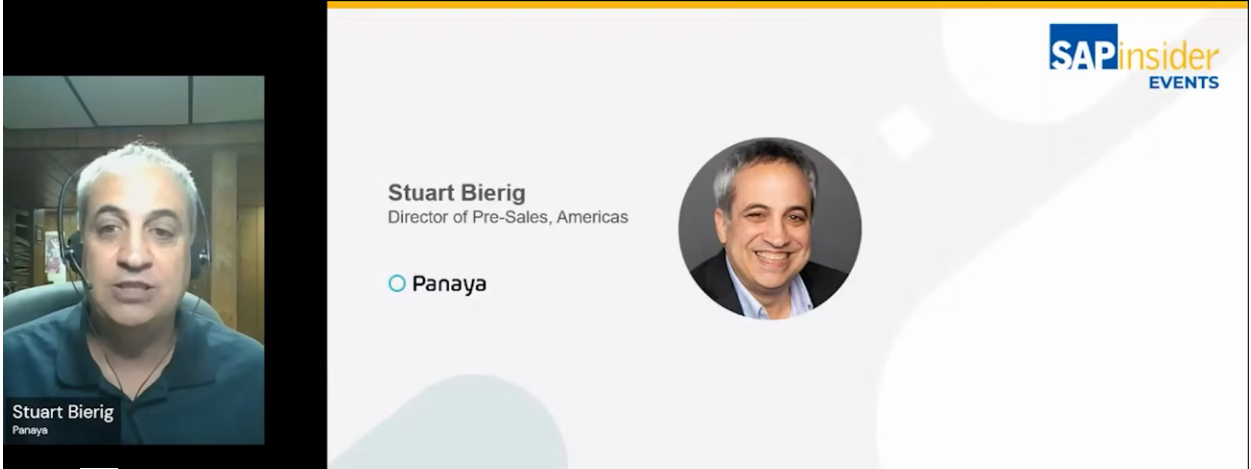Best Practices for Migrating SAP S/4HANA
SAP has announced that it is ending support for its Business Suite 7 software, effective 2027. That leaves businesses six years to migrate to SAP’s S/4HANA platform, an upgraded iteration offering advanced analytics and a consolidated approach to ERP systems. But the act of migrating to S/4HANA is no small feat and requires extensive planning on everything from mapping out the time for migration, the method of implementation, and realizing what exact business value there is to be unlocked.
In this Q&A session, Dr. Steele Arbeeny, Chief Technology Officer of SNP, covers some best practices for managing an SAP S/4HANA migration, including the biggest roadblocks facing businesses on this journey, developing a strategy for mitigating challenges associated with that migration, and figuring out the basics of just where and how to begin.
What do you see as some of the largest issues hindering businesses from making the leap to S/4HANA?
Perhaps the biggest issue preventing customers from moving is the lack of a clear business case. Many customers are not able to clearly understand the benefits they will achieve or the value and savings delivered by those benefits. We all hear about the technical innovations of the platform, and they are great, but does that, for example, enable me to reduce my procurement spend? And by how much? I believe part of the reason for this is that customers are looking for this value in the wrong place. Incremental performance improvements will never deliver enough value to justify the disruption needed to implement S/4HANA.
Explore related questions
A common and recurring theme I hear when customers talk about why they want to move is their desire to utilize the advanced analytics available in S/4HANA. But if I have several separate ERP systems now and then do a one-to-one upgrade, my analytics will never work properly. To get the benefit of the analytics, the data needs to be collocated in a single HANA database. So, a project like this will never deliver on value. It will join the realm of most ERP projects, which unfortunately deliver negative ROI.
However, if these separate systems were merged into one single S/4HANA system, then enterprise-wide analytics would be realized, and the true reason for adopting S/4HANA – advanced analytics – would become a reality. You can see from this where the true value lies. It is not in the adoption of a new ERP system or some new underlying technology. The value is in the transformation itself. The act of merging and harmonizing these systems is what allows S/4HANA to deliver on its promised value.
Another big reason slowing adoption is the deadline. SAP has given businesses until 2027 to migrate to S/4HANA. Now, if you are migrating purely to meet an arbitrary deadline, I would recommend against it. That’s never the right reason. You have to find the business value. You will have a better outcome in the end.
Still, 2027 is an enormous amount of slack. If you’re working on a project that isn’t due for six or seven years, the odds are that’s going to feel a little less urgent and a little less of a priority for the near term than something that has a deadline for the end of the quarter or the end of the fiscal year. A lack of understanding around the necessity and especially the value of migrating to S/4HANA now, instead of waiting until 2027, is one hindrance for businesses that would otherwise make the leap.
For organizations that are ready to make the leap, the next challenge they’ll often face is the complexity of legacy systems that are often heavily customized and hold massive amounts of data that are not clean. On the face of it, a S/4HANA migration can be a highly complex, risky, and costly process, which makes thoughtful planning around a migration approach incredibly important.
Once a business decides they’re ready to migrate to S/4HANA, where do they begin?
As a starting point, there are three questions that every enterprise should ask themselves:
- What is my desired end state? It’s important to know what “done” looks like. Projects may have multiple phases, but it’s important to know what your ideal ERP architecture looks like. Do you want something that enables rapid M&A? Or something that allows you to take advantage of best-of-breed third-party apps? Or something else? It’s easier to get there once you decide where you are going.
- Where can we standardize, where can we innovate, and what absolutely must remain the same? Things will change for you in the S/4HANA world. But you don’t need to adopt every one of those. Some may be beneficial, some not. For example, you may have a very customized usage billing process that is mission critical. Obviously, you cannot change there. However, areas like finance may benefit greatly from adopting the standard processes available in S/4HANA. This needs to be mapped out at increasing levels of detail – from module to component to individual process, if necessary.
- How much data do we need to migrate? You will certainly need to bring some data. Especially configuration and master data. But analytics are based on statistical models that require historical data to be predictive. To start using analytics on day one, you will need to migrate historical data, too. How much data will directly influence costs as well, as this drives the memory requirements in the HANA database.
How do you develop a strategy that mitigates migration challenges and allows for a smoother transition?
Most enterprises tend to approach their S/4 migration using one of two methods: the Greenfield approach and the Brownfield approach. Greenfield creates an entirely new system with new business processes and configurations – it’s most suitable for organizations that have a large amount of custom code that they would like to replace with SAP’s most current logic. Brownfield, on the other hand, is more of a technical upgrade – it simply updates software without taking advantage of new innovations.
While each method is proven, they are not without their compromises. For instance, the Greenfield approach not only involves implementing a new platform from the ground up but also requires the arduous process of adopting new business processes. The Brownfield approach comprehensively moves data, objects, and customizations to the new platform, but it’s not selective. It doesn’t allow for organizations to update their business processes, retire unused components, or take advantage of the new innovations and features of S/4HANA.
A third method – the Bluefield approach – has emerged that takes the best of both worlds. It allows enterprises to take a more customized, selective approach while taking advantage of updating both the technical infrastructure and enabling the new innovations in S/4HANA. What makes Bluefield possible is end-to-end software that can intelligently analyze systems in detail and allow businesses to select what they want to migrate.
What should organizations look for in a migration partner?
Choosing the right partner will a critical success factor to ensure a smooth and seamless S/4HANA migration. First and foremost, you’ll want to make sure that your partner is highly specialized in SAP and understands the various nuances that go into these complex migrations.
Also, look for partners that are enabled by software. An automated, software-driven process provides the reassurance that human errors and omissions will be minimized while timelines are accelerated through greater efficiency.
The right partner should also be accustomed to remote delivery models – particularly now, as the COVID-19 pandemic is forcing businesses to manage and complete their migration projects remotely. Ensuring your partner has the right collaboration tools, information documentation, and lessons learned from previous remote projects are all criteria to look out for.








